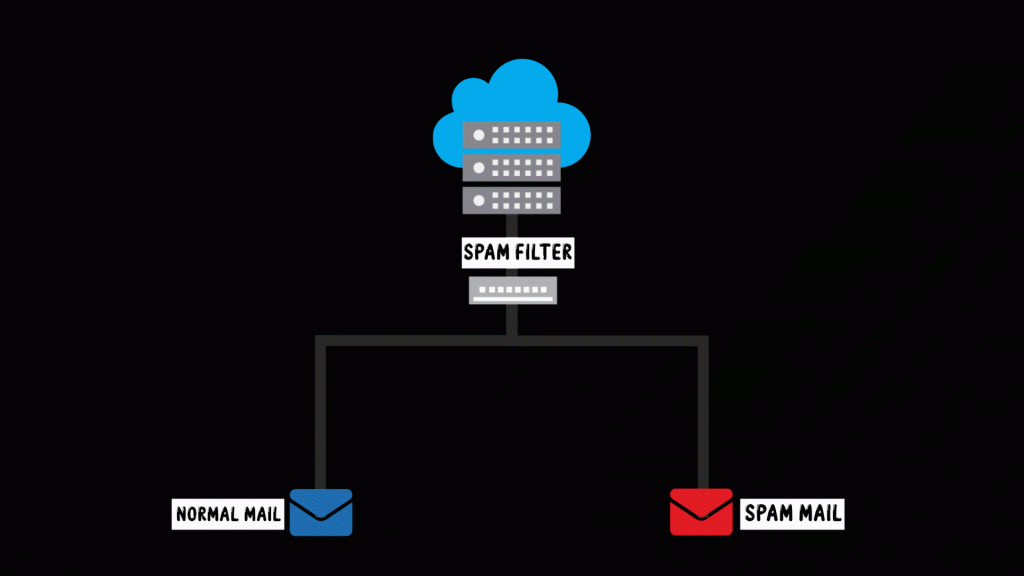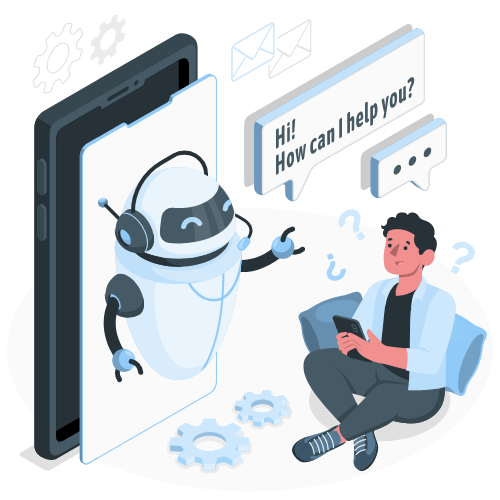As per the Future of Jobs Report, 2020 by World Economic Forum around 85 million jobs will be replaced by 2025, the good news is that around 97 million new jobs will also be created. Data analysts and scientists, Artificial Intelligence and Machine Learning specialists, and big data specialists are among the fastest-growing jobs.
What Are The Real Life Applications Of Artificial Intelligence in Action?
1. Anti-spam Filters
According to research, 14.5 billion spam emails are sent every day. Around 46% of emails are spam. Spam filters detect unsolicited, unwanted, and virus-infected emails (called spam) and prevent them from reaching email inboxes.
Spam filters are applied to both inbound and outbound emails (emails entering the network) (and email leaving the network). An ML-based spam filter can learn in a variety of ways, but it must be trained by analyzing large amounts of data from previously identified spam emails and identifying patterns. The ML algorithm then generates a new rule for the spam filter.

Each incoming message is scanned by (Artificial Intelligence)AI spam filters, which label any objectionable content. Its intelligent learning capabilities identify malware warning signs. If this malicious software is found in your inbox, it is immediately flagged and you are warned not to open it.
AI(artificial intelligence) has found its application in Spam filtration as well. It utilizes the power of AI to declutter junk emails and send them to the respective spam folders. This way the user will receive the filtered material. You will be surprised to know that the world-famous Gmail has achieved a filtration capacity of roughly 99.9%.
2. AI-based Personalized Online Shopping Experience
Nowadays AI(artificial intelligence) has found its usefulness in e-commerce. Eager to know how? Let’s get into it. At an initial level, the AI algorithms track the user’s shopping habits by going through their most recent search history. This way the AI algorithms analyze what users find interesting. On the basis of this, these AI algorithms create a list of products that the user has shown interest in the past(via recent search history).

It then pops up these products as a recommendation which the user is more likely to buy. For example, suppose a user wants to buy a hard drive, his recent searches indicate that he is interested in the Western Digital brand of hard drives. So, the smart AI algorithms use this fact and recommend the user Western Digital hard drives. This way the user gets what he wants and the e-commerce company makes a sale. It is a win-win. A real-life example is Amazon.
Amazon utilizes the power of AI(artificial intelligence) technology to provide the best possible recommendations for products that serve the needs of the users.
3. Usage of AI Algorithms By Autocorrect or Text Editors.
AI(artificial intelligence) offers a wide range of applications. It can also be used to proofread the content, do keyword research, grammatically check, etc. The AI algorithms use a wide range of technologies like machine learning, NLP(Natural Language Processing), and Deep learning to figure out the wrong usage of language and provide suggestions to correct it.

At an initial level, computer scientists and Language experts work together to train the AI algorithm in English Grammar rules so that it will be able to catch and suggest changes if it finds any kind of inconsistency in the language. For example, if the AI algorithm detects any spelling mistake or wrong grammar implementation.
For example, QuillBot AI – is a good writing assistant that helps content editors to refine their content with ease. It is powered by advanced AI (artificial intelligence)technology that uses natural language processing (NLP) to automatically review and refine written communication.
4. Chatbot Uses AI Algorithm
The usage of Chatbots has increased tremendously over the years. The chatbots are visible on a majority of websites that we visit.
Basically, there are 2 types of Chatbots:
1. Text-based chatbot: This chatbot uses the text interface to answer users’ queries.
2. Voice-based Chatbot: This chatbot uses a human voice interface to answer the user’s queries.
Now let’s talk about what types of approaches are useful in designing chatbots.
Rule-based approach: As the name suggests, this approach follows the pre-specified rules using which the Chatbot model is trained. The chatbots that are built using this approach are good for simple query processing only.

In order to create Chatbots that handle complex queries, machine learning algorithms are used to train the system’s natural language which is mainly used in day-to-day conversations. To make computers understand how people talk in natural language, the process of Natural Language Processing is used to enable AI(artificial intelligence) in chatbots.
5. Magenta- (Google’s AI Project)
Have you heard about Google’s AI project – Magenta?
It’s a special project by Google Brain Team using which Artificial Intelligence is used to influence artistic fields.
The main objective of this revolutionary AI project is to utilize the power of deep learning and reinforcement learning to build music and art. The engineers and researchers in the Google Brain Team have come up with deep learning and reinforcement learning algorithms to generate songs, images, drawings and other artistic materials.
Researchers at Magenta quantified 15 hours of real drummers performing on MIDI drum kits, then trained a neural network to predict the beats. They used a predictive method similar to Google’s automatic language translation system, with drum beats and patterns replacing words and phrases.
According to a Google Brain Researcher & Guitarist- Jesse Engel, ” GrooVAE’s beat is so humanlike it “almost makes me shudder.”
The Magenta studio is ideal for musicians and artists who are going through creativity blocks. The tool is designed in such a way that it utilizes the full potential of recurrent neural network(RNN) that follows the original drum beat or melody inputs, generate up to 32 measures of additional music.
Summing Up!
AI (Artificial Intelligence) is the need of the hour for most industries. As per the prediction by Servion Global Solutions, by 2025 around 95% of the interactions with the customer will be driven by AI. So, it is high time that young innovators learn about the importance of AI and start learning it. Students can learn AI at a young age through a variety of online coding courses, and they can secure a bright future full of lucrative career opportunities.
 2166
2166



